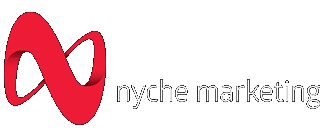What to Blog About: Top 12 Blog Formats That Work
If you look online, you’ll find that articles that give you dozens–or even hundreds of what to blog about. Problogger gives you 52 blog post ideas, The Blogging Buddha has another 101 blog ideas, and Lauren over at Elle and Company shares 50 of her blog post ideas to get your creative juices flowing.
But out of all those ideas, I bet you’re wondering “Which ones work?”
As a content marketer who provides blogging services for my clients, I analyze the traffic and sales that result from them, so I can tell you which ones I think work the best.
Here are the top 12 blog formats that work!
-
-
Blog about Products or Services
-
Blogging about a product or service you offer is a great way to boost keyword frequency on your website. It also gives your customers an idea of what they would be buying.
This type of blog post is a way for you to promote new products or push services.
Torch7, a video services company, wrote a blog about one of their products, promotional videos.
In the blog, Tina explains how she made the promotional video for the Edmonton Valley Zoo.

Read about 6 Blog Posts To Write To Promote a Product.
-
-
How-to Blogs
-
How-to blog posts are extremely popular because people find them useful!
When we have a problem, we want to know exactly how to solve it. How-to or “tutorial” blogs will walk us through the steps in a simple way.
If your business can solve someone’s problem, it builds your credibility and expertise. Customers will be more likely to trust you, buy from you, and keep coming back for more.
How-to’s are also a great way to endorse your products or services. For example, if your article is about a plumbing problem that needs professional service, and you provide that service, your blog could create sales!
True Colors Workshops has a blog about how to manage conflict in one’s life and career, which is useful to anyone. But it also highlights the skills they teach in their workshops.
-
-
Newsjacking Blogs
-
Blogging about the latest news can bring traffic to your site. When you write about a current news story it shows that your business know what’s goin’ on.
Just be quick! You don’t want to be writing about yesterday’s news. Crest Roofing took advantage of the release of solar roof tiles (by famous entrepreneur Elon Musk) and roofing customers’ interest in solar roofing by writing a blog called, “What’s the Big Deal about Elon Musk’s Solar Roof Tiles?”
-
-
Seasonal Blog Posts
-
Seasonal posts are great for bringing traffic to your website. Take advantage of people searching for “Easter Ideas” or summer themes by posting about seasonal topics.
If your business deals with interior design, at Easter, you could blog about Easter decorating ideas like House of J did with their blog, “Easter, Spring, Decorating….Ready, Set, Go!”
If your business is plumbing, in the spring, you could blog about Spring Plumbing Issues and How to Prevent Them, like Canuck Plumbing did.
-
-
Case Study Blogs
-
A case study blog post isn’t a testimonial, it’s much more detailed than that. It will follow a customer’s journey from start to finish. Your case study should tell the story of a customer’s problem and the solution you provided them.
In it, you describe their experience using real numbers and actual results.
You get to highlight how met your customer’s needs and helped them reach their goals, which helps readers imagine how you could meet THEIR goals.
Case study blogs can follow a story format or an interview format, but whichever format you choose, use the customer’s own words whenever possible.
Here are some more tips on writing a great case study blog post.
True Colors Workshops has a series of case studies on their blog. These blogs outline how learning about your “true colors” can help you “know what your core values and needs are and feel good about them; you can perform at your highest potential in every area of life.”
They use examples of real people in real-life situations to help customers think about how they can use real colors to help in their everyday situations.
Read The Orange True Colors Case Study by clicking here.
-
-
“What is” Blogs
-
“What is” posts explain an idea, concept, product, or term that relates to your business. This type of blog helps your customers understand your business and what you’re selling.
If your trade uses a lot of jargon or concepts that are foreign to your customers, “What is” blogs give them insight into what you do and how it will help them.
In my blog, I use this type of blog to explain SEO, Content Marketing, PPC, Social Media, Landing Pages, and more.
I’ve also used “What is” blogs to explain my services, like in What is a Living Website?
-
-
“Best of” Blog Posts
-
“Best of” blog posts help you capitalize on our need to have the best. When you’re searching for a restaurant in a new town, you want to know which ones are the best, right?
That applies to everything! We want the best furniture, appliances, house cleaners, home builder, videographer, etc.
So writing “best of” blogs will bring people to your website in search of advice or info on where to go for the very best of what they’re looking for.
Jennifer Woch, the interior designer behind House of J, has the inside scoop on where to get the best furniture. She shared her recommendations her blog post, Top 21 Furniture Stores I Shop For My Clients in Edmonton.
This blog gets a lot of traffic and is great for her business. People looking for furniture are also looking for interior design services.
-
-
Trends
-
Blame Twitter for the term, but trending is the perfect way to describe things that are popular these days. Some of us are hungry for the latest trends. Buzzfeed made an empire that capitalizes on our desire to know what’s popular!
By writing a blog about what’s popular in your trade, you show that you know what people want. It tells people that your business is current and credible.
Custom home builder, Monique, from Canterbury Homes Inc. shows that she’s got her finger on the pulse by blogging about The 2017 Trends for Home Style and Interior Design.
-
-
Blogs about the Local Area
-
Show your customers that you care about your community by blogging about it! If you donate to a local charity, write about it!
Blogs about local events are highly sharable, which raises brand awareness for your business.
Canuck Plumbing provides plumbing services in Windermere, Edmonton. By writing a blog about the area, Windermere, Edmonton, AB: Where to go for Fun, Food, and Shopping, people will see Canuck Plumbing’s blog when they search “Windermere” and think of them when they need a plumber.
-
-
Guides are a blog format that WORKS!
-
Show your customers that you are an expert in your field by writing a guide. In a guide, you can get in-depth about your subject.
Guides help your customers out, giving them something free, like knowledge and advice. People also like to share guides with their friends if they find them helpful or interesting.
Krinkle Klean’s Guide to Clean the Kitchen is a great example of a blog post that shows they are expert cleaners and that people find helpful.
-
-
Problem and Solution Blog Posts
-
Problem and solution posts are a type of post where you identify a problem that your customers have, then give them the solution.
You tell them exactly how to solve their problem, which could involve your products or services.
In Kingstree Plumbing’s blog, 5 Home Water Problems and How to Fix Them. They identify hard water as a problem and explain why a water softener (which they sell and install) is the perfect solution.
-
Video Blogs
It’s such a sign of the times that videos are now the medium we expose ourselves to most. Facebook, Twitter, Google.com, and YouTube are 4 most popular websites on the internet, and all of them cater to video posts.
A trend we’re seeing in blogging is that we like videos to explain and entertain us more than we like reading a blog.
Videos are also more sharable and less time consuming than reading. They’re so popular that even news websites like CBC, Global, and The Huffington Post are publishing their articles in video form rather than the traditional written format.
Nyche Marketing has a video blog that explains our online marketing services. You’ll see that it’s just a video without any text above or below it.
And on that note, if you haven’t already started blogging, start today. No matter what your business is, you can write blogs that will bring traffic to your website, increase your credibility and the likelihood that your website will show up organically in searches.
Need more reasons to start blogging and inspiration for writing blog posts? Read What Should I Blog About.
Maybe you want to blog, but you don’t have the time. Nyche Marketing can help you with ideas, creating a content plan and calendar, and we can also provide blogging services.


